Artist based in Goa, India

Akshay Mahajan, Portrait by the Arabian Sea by Kapil Das
Tell us about yourself, what's your background?
As far back as I can remember, the writing and art that I liked best always disturbed me slightly and made me realise, with great surprise, that a very large and sometimes unsettling world existed beyond my immediate confines. We lived in an apartment complex in Bombay (now Mumbai) on the periphery of a derelict mill complex.

To die is to turn in gold, Pigment Archival Print 2022.
The first thing I like to meet in a new city or old is a sculpture. Toe be a sculptor you need to find a whole body in a head. One sculpts bottom up, with slabs of clay; the chin is often the hardest “The chin becomes the legs, stepping out, moving forward.”
A hole in the fence that divided these worlds was not unlike Alice’s looking glass. Wandering about forgotten decaying edifices, taking pictures, the joy of finding a flock of lesser flamingos at this abandoned industrial water's edge. There is something disturbing about beauty, after all; it will, like all objects and experiences, wear away with time.
Photography was that tool, a reminder to cherish the present, lest your inappropriate childhood playground becomes luxury condominiums and there is no collective memory of what came before it.
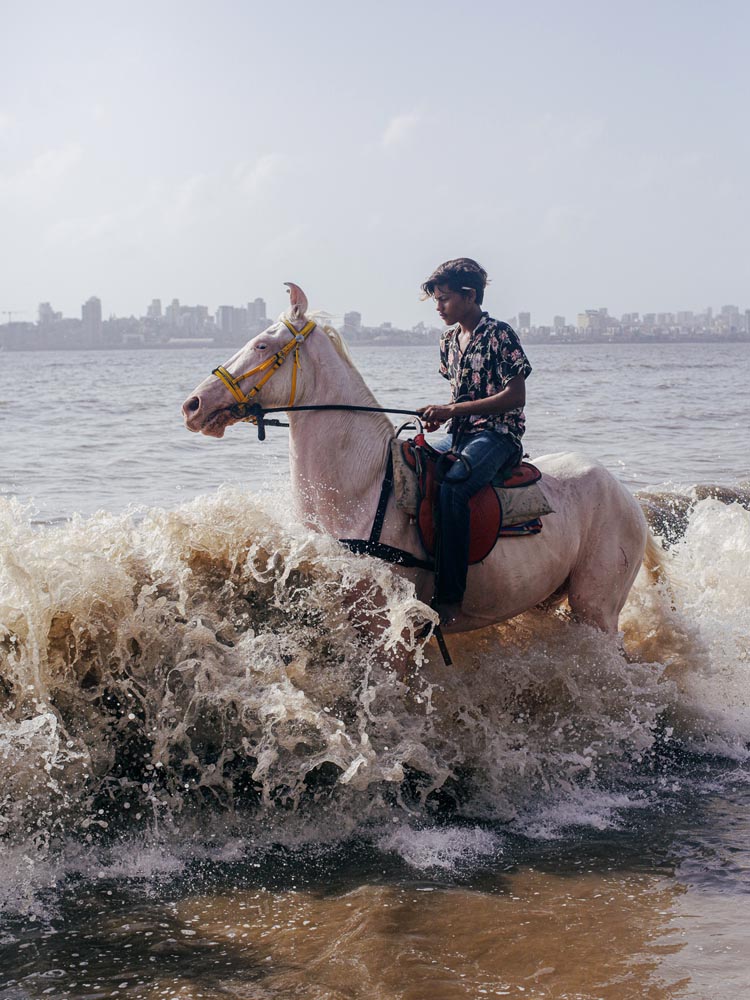
The only ones left on the Island. To die is to turn in gold, Pigment Archival Print 2022.
It wasn't until I dropped out of college, living a Bukowski-esque "down and out" lifestyle, that I chanced upon Virginia Woolf's essay "Street Haunting." It explored the imaginative act of observing people's minds as they moved through the city's wintry, twilight streets - the true embodiment of the flâneur. This crystallized something that I loved doing, being the detached "loafer" on the streets of Bombay. In the short-lived age of blogs, I decided to start one, combining pictures with words, and while it wasn't necessarily popular, it was the beginning of my artistic practice.
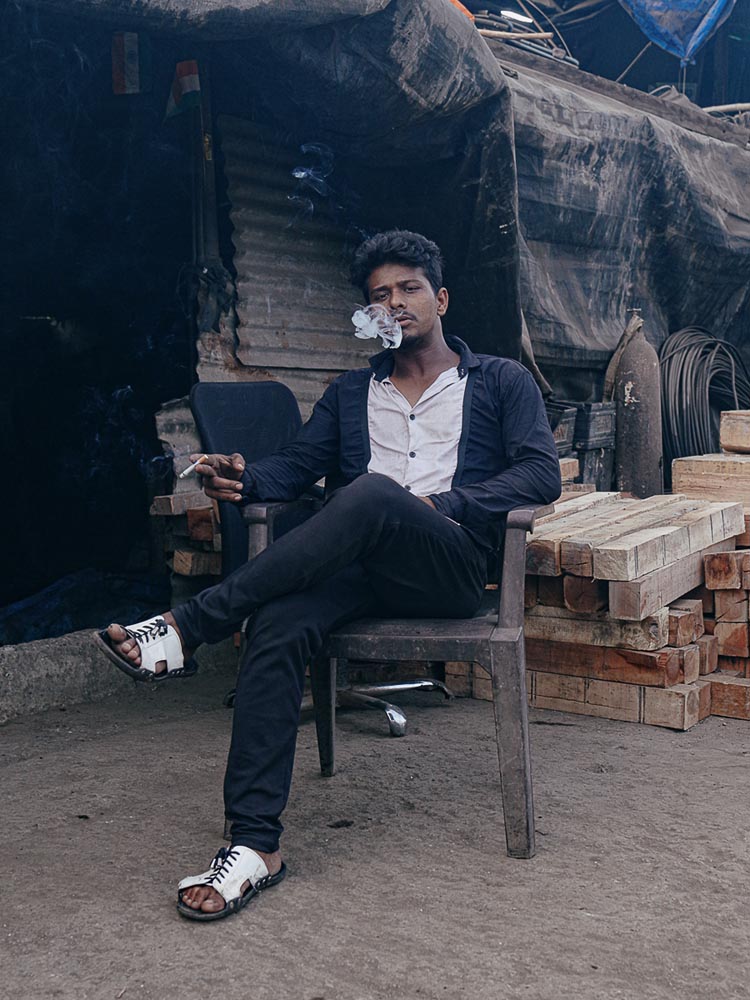
To die is to turn in gold, Pigment Archival Print 2022.
As you walk through Bombay, your eyes are assailed by words, written as spoken at least twelve languages and many others at unscientific count. Your nostrils filled with the compound scent of hot dust, attar, diesel fumes, woodsmoke from charcoal braziers, salted dried fish, and a persistent trace element of dried-urine; you are walking much of the time, through the very sea itself.
Licking your lips, does one taste sea-salt or the sweat slowly tricking down one's brow ?
Its hard to rid oneself of these traces, like wet sand, Bombay sticks to your ankles. Dust it off at your own peril.
"Walking is an essential part of my creative process. The act of walking through the streets is like reaching into the indiscernible future and grasping at what could be. It's about watching for omens and finding inspiration in the details of everyday life."
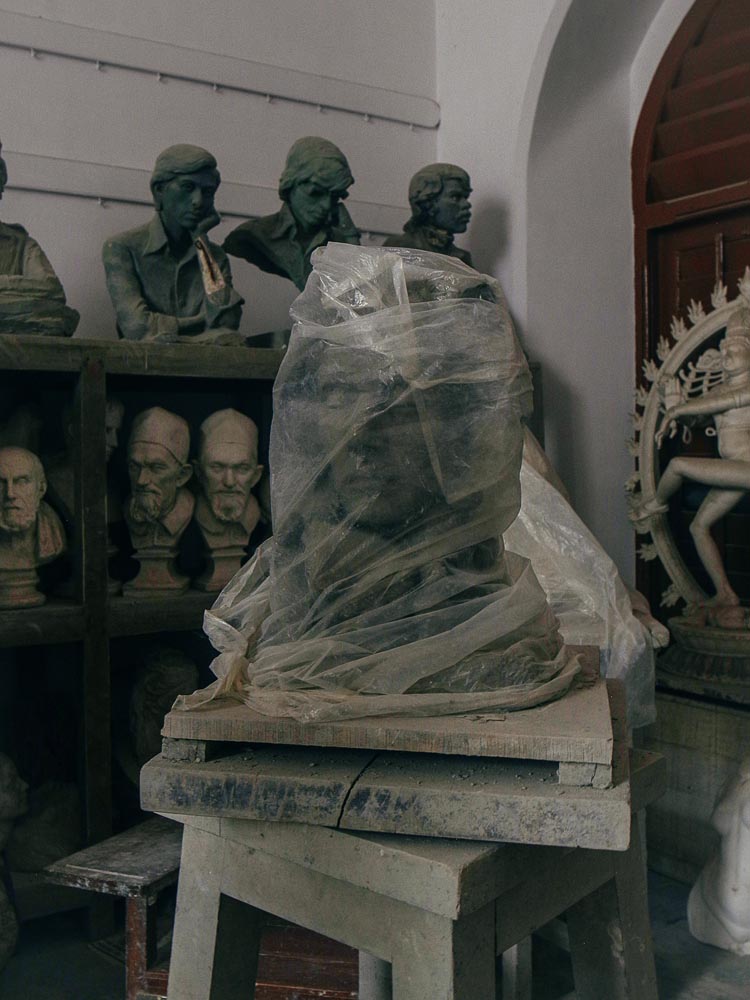
Bust in Plastic. To die is to turn in gold, Pigment Archival Print 2022.
What are you currently working on and where did the inspiration for it come from?
I'm currently working on a project called to die is to be turned to gold* the story of the once-colonial city of Bombay (now Mumbai) told through the eyes of a protagonist, a young sculptor. A city they scour for artistic inspiration - the vision of which is set out in this series of photograph laid out as chapters that seek to exorcise colonial ghosts from the city through micro-histories.

Display for The Sea Green (& South) from the series to die is to be turned to gold* , Multi-image collage paired with text and paraphernalia.
I just completed one such chapter titled "The Sea Green (& South)" which is presented as a diary (of our protagonist) organized by room numbers, featuring a series of multi-image collages paired with text and paraphernalia. The showcases the transient and mundane aspects of the city and pay homage to the bygone notions and everyday anachronisms that fill the empty rooms behind numbered doors. It's a celebration of the act of creating something out of nothing in empty rooms.

Room 401, Multi-image collage paired with text and paraphernalia. Archival Pigmet Print 34 x 37
Innovation does not only happen in the field of technology — it occurs everyday in a creative practice. What do you do for inspiration?
Innovation doesn't just happen with the use of technology; it occurs every day in creative practices. When it comes to finding inspiration, I believe there are two parts to the creative life: what you take in and what you put out. Continuously feeding your subconscious, intellect, and curiosity with inspiration is essential, and then filtering these inspirations through your own life experiences can hopefully result in something unique and interesting.

The Sea Green South - Suite 213
It’s the kind of establishment that keeps guest books. Oversized, heavy, handbound, and gold embossed with an art deco font that reads “Sea Green South”. The night manager manoeuvred the dark green register and slid it diagonally towards me in a precise, well-rehearsed fashion. I could imagine the white-gloved hands of his predecessors, deftly leaf through the officious green pages over the years. My turn to “make an entry” to questions for which I possess no answers. Under the column Profession, I scribble ‘journalist’, for some reason, knowing it couldn’t have been truer if I had said, Magician. Coming from? Somewhere. Going to? Who knows. Purpose of travel? To clandestinely photograph this lime green art-deco monolith, but unsure how. There is probably an old cupboard in the back with hundreds of these Guest books, going back to the inception of this building, where people pretend to be other than themselves, if only for the briefest of motivations. To fill an answer in a column, or things unsaid; for how is one to condense complexity to fit a three-inch space.
For self-nourishment, I try to surround myself with inspiration. I've always been fascinated by memorabilia, and when my wife and I bought our house in the Goan countryside, we found it crowded with the leftover possessions of the previous owner: his books, teacups, his father’s paintings, newspapers, etchings, clothes, postcards, toys, family photographs. All hinting to forgotten fragments of family anecdotes. I've been always smitten with a sense of fascination with memorabilia. In the face of these inherited memories, I attempted to rescue the story of this man’s house I had inherited. I placed the photographs and paintings back on the wall, relocated some of his book on to our shelves, found a place for the old crucifix on our alter and so on. Where they sit now to convey the ordinary daily continuity of their experience. I like to populate my photographs with these "ghosts" in the hope that one day, their apparitions will reveal their stories to me.

The Sea Green South - Suite 213, from the series to die is to be turned to gold*, Archival Pigmet Print
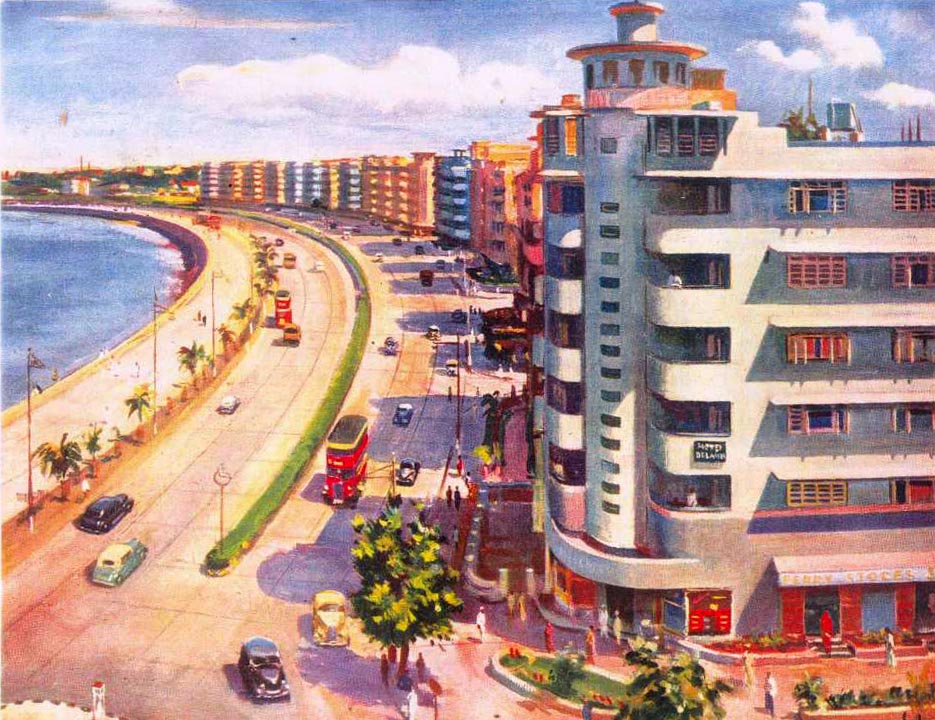
Artdeco : Reference Image - Old Postcard of Artdeco buildings on Bombay's Marine Drive.
Throughout the years, I've discovered a love of vernacular photography, particularly the everyday family photograph, the album, and the old dusty studio portrait. This stems from a desire for an art history of photography in the Indian subcontinent from a truly subaltern lens. A people's expression making photography their own, a history of photography seldom seen as canon.

I've discovered a love of vernacular photography, particularly the everyday family photograph, the album, and the old dusty studio portrait
Describe your practice and process. Where do ideas start for you? In the studio or being in the world?
My practice and process are deeply intertwined with the world around me. While most of my ideas are conceived at home, they are ultimately born out in the world. For me, walking is an essential part of my creative process. The act of walking through the streets is like reaching into the indiscernible future and grasping at what could be. It's about watching for omens and finding inspiration in the details of everyday life.
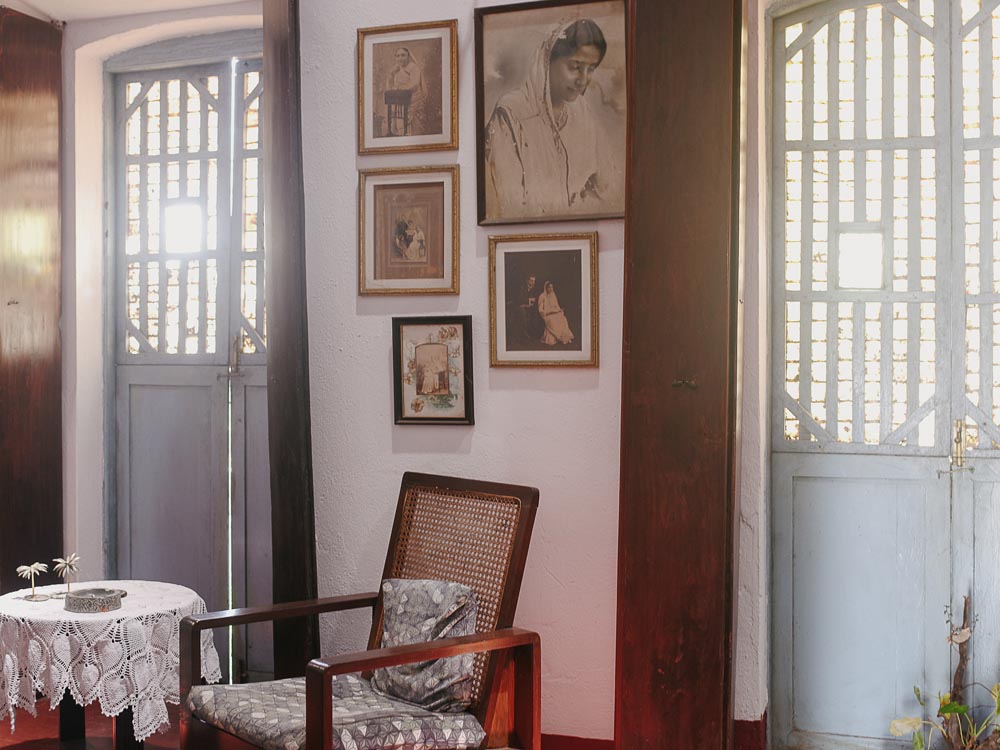
Photographs that I inherited with the house
I start building my worlds by observing these details. What does it mean when a young boy selling roses offers one to the raging sea? The sea welcomes the offering with a giant wave, breaking it into its constituent parts and throwing them up to the sky like grains of rice. These are the kinds of details that I look for, the ones that help me to build a world within a world.

Boy offering roses to the Arabian Sea. Archival Pigmet Print
When I was growing up, there was a small 6ft by 3ft balcony in my apartment that my mother had turned into a little green oasis, overflowing with plants in every conceivable nook and cranny. I used to help her make bottle gardens in old apothecary jars, layering them with charcoal, gravel, and moss. This is the essence of my practice - it's like building terrariums, taking bits and pieces from the world and putting them into a little glass world within my camera and hoping they will grow.

Old terrariums in the house, the essence of my practice is like building terrariums, taking bits and pieces from the world and putting them into a little glass world within my camera and hoping they will grow.
How do you make your work, does it start with a sketch?
I begin my work intuitively, often sparked by internal conversations. For me, it's important to balance my practice with insights into local cultures and artistic expressions, allowing my photographs to transcend genre and geography by embodying their own unique style, mood, and timbre. It's like different novels from the same author. In my project People of Clay, I worked with local artists and theatre performers to recreate scenes from popular folksongs, resulting in a sensory ethnography of Assam in North Eastern India. By melding these collaborations with my own impressions, I was able to create a new aesthetic synthesis that visualised the hidden, forgotten, imagined, or denied aspects of the region.
In contrast, my project *to die is to be turned to gold takes a different stylistic approach. Here, I wanted the photographs to be seen through the eyes of a protagonist, a young sculptor, rather than my own. To achieve this, I employed a bottom-up approach to my photography, much like how a sculptor builds their creations with slabs of clay. Starting at the feet and working my way up allowed me to establish the correct proportions while finding the perfect balance between style and substance.
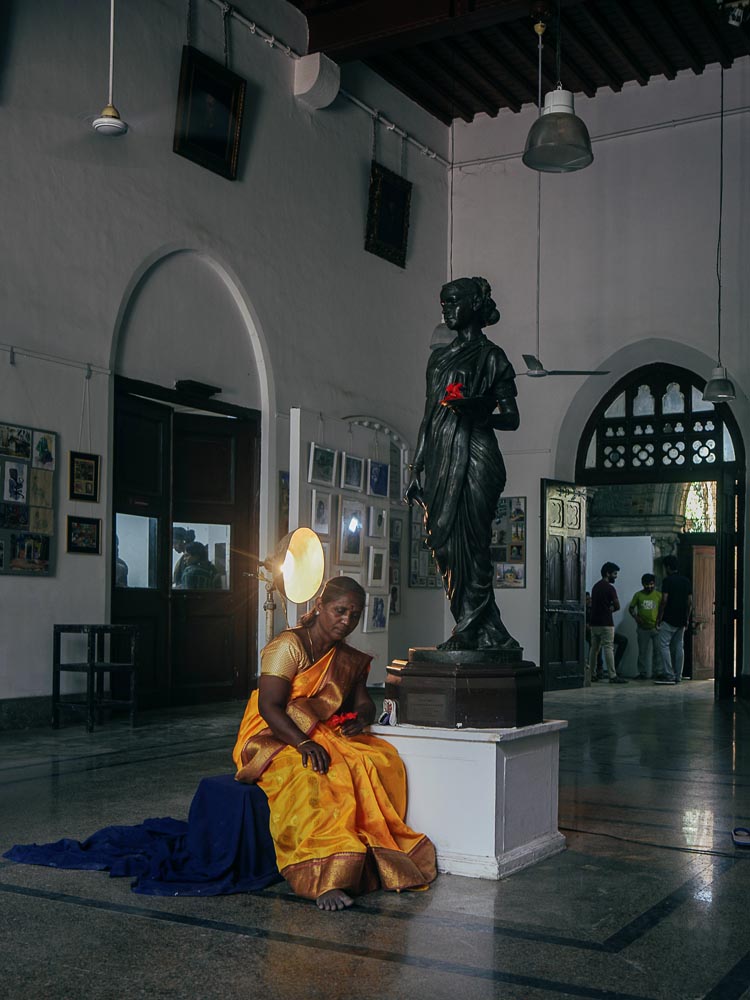
To die is to turn in gold, Pigment Archival Print 2022.
Who are the invisible on whose back this city was made?
Laxmi is one such heroine, a professional nude muse at the JJ School of Art, she is from a long line of Pre-Raphaelite muses since 1897. They say unusually in the case of the artist and their muse, the passing of time only seems to amplify, rather than fade perception.
Do you have your own studio ritual? What does that look like for you?
Some years ago, my wife and I purchased an old house in a village in the Indian state of Goa, which doubles as my home and studio. When you enter a Goan home, the first thing that catches your attention is the carefully framed photographs of deceased elders placed next to deities, saints, and crucifixes. In almost every household, you will find an altar dedicated to past ancestors, adorned with slow-burning floral incense and garlanded photographs. Christopher Pinney, in his book Camera Indica: The Social Life of Indian Photographs, notes that in India, photographs are not merely duplications of the everyday world but are prized for their ability to preserve traces of a person's existence.
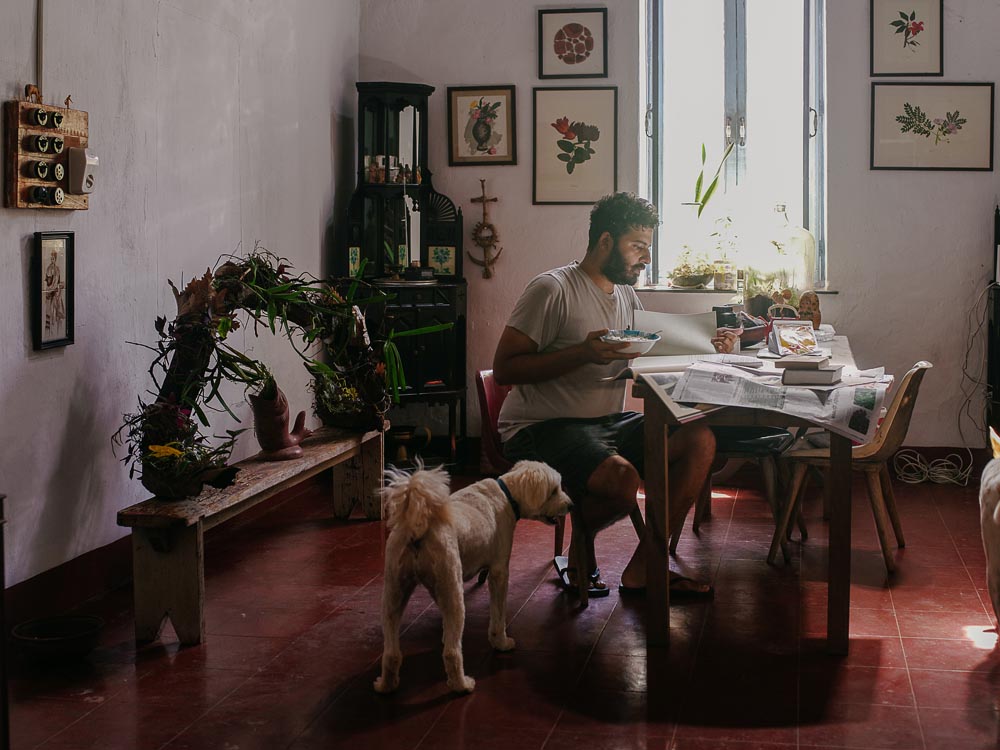
Home and studio view, Photo by Mrigayanka Roychowdhury
Inspired by this idea, I began collecting old, orphaned photographs from local junk and antique shops and creating altars to these forgotten ancestors. This practice allowed me to engage with the new space while also exploring and embodying a new photography style unique to the region. It has been said that photographs themselves are records of death, as they capture a moment in time that has already passed, and what was of the person is no longer. By creating these altars, I have found a way to give new meaning and life to these forgotten photographs, and in doing so, I have established my own studio ritual that helps me to connect with my surroundings and my art.
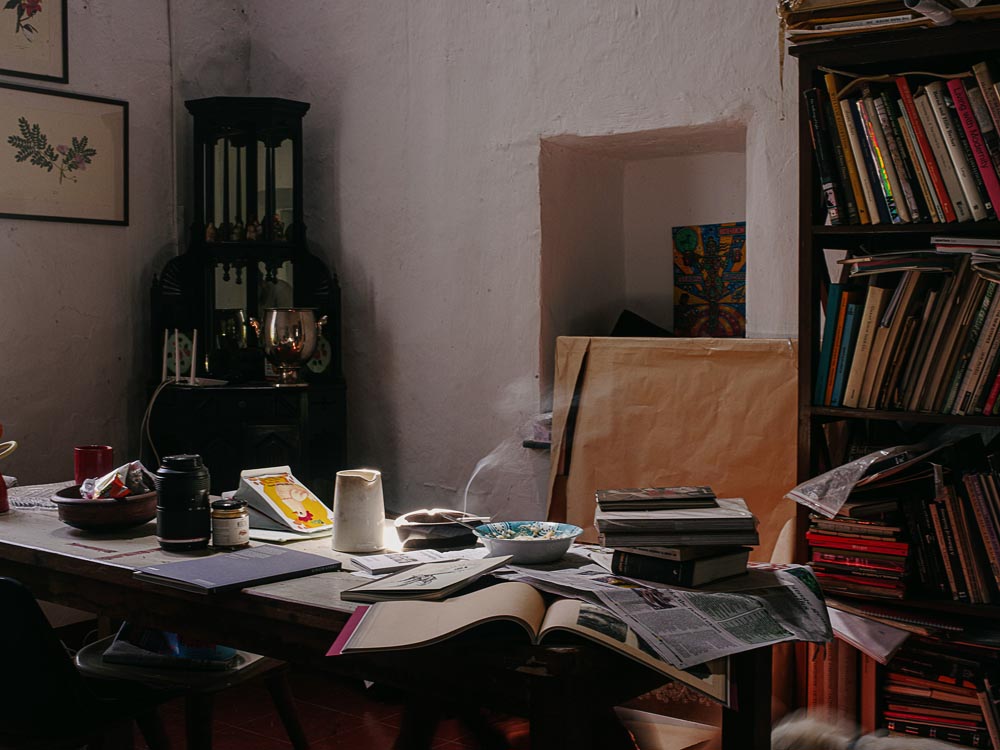
Home and studio view
Who are your biggest influences?
Throughout my photography journey, I have been significantly influenced by my work in curation, which has opened up many exciting opportunities and collaborations. One of my most significant influences was in 2008 when I co-founded Blindboys.org with Kapil Das, who has been a constant peer and mentor to me. Our main motivation for establishing this platform was to provide a community-driven space for South Asian photography, where photographers of all levels could display their work in an open format called BLOWUP! This improvised street exhibition challenged conventional approaches to photography from creation to consumption.

Certain things about a place become its memory: the old trumpet horns of old BEST buses; the smell of fresh baking Pao; raw glazed sun on a rain-dark patch of cement on the north corner of Barrack Road.
Besides Blindboys.org, I was also a member of the photo editorial team of PIX Quarterly, a contemporary photography publication that focused on South Asian practices. With the likes of Rahaab Alana, Tanvi Mishra, and Philippe Calia, we explored various photographic practices in the region. I was also fortunate enough to be a co-curator of Goa Familia with Lina Vincent, a project that digitally documents visual and oral histories in India and its larger diaspora. In 2019 I was asked to co-curate Goa Photo along with Angela Berlinde and Lola Mac Dougall. I'm currently collaborating with Adira Thekkuveettil and Kaamna Patel at EditionsJojo on a new podcast called GlassEye that looks critically at visual practice in the Subcontinent and it's diaspora.
Working alongside these cultural practitioners and workers has significantly influenced my practice, shaping it into what it is today.
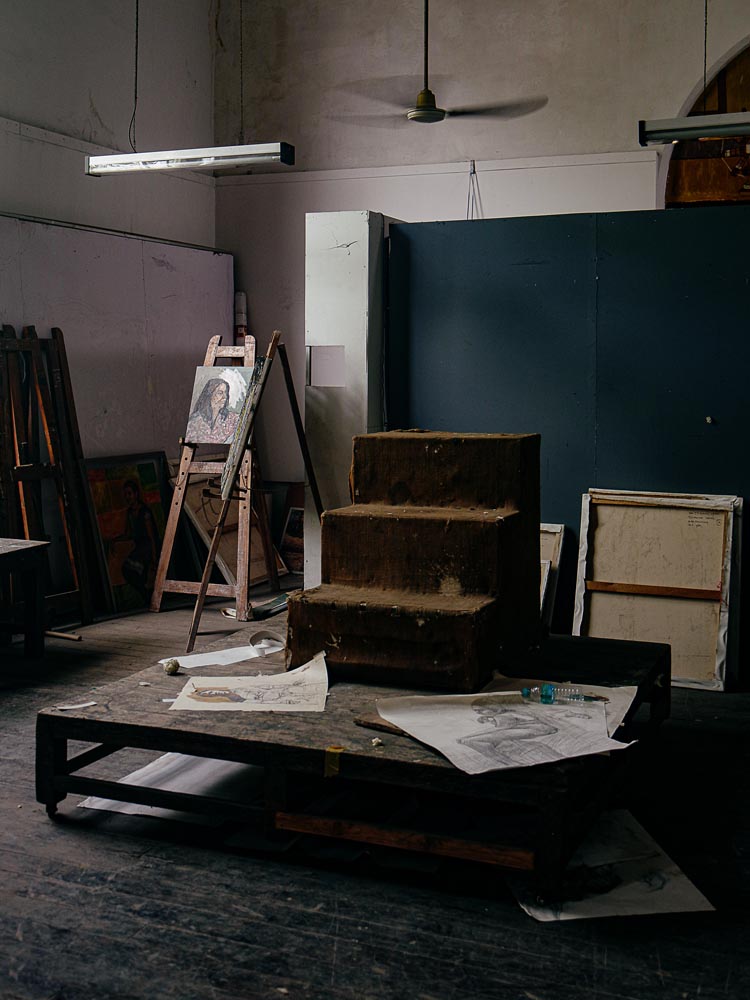
To die is to turn in gold, Pigment Archival Print 2022.
Are there books or films that are an important source of inspiration?
Without a doubt, books are a constant source of inspiration for me. Whenever I'm working on a project, I like to channel the ideas I'm reading, especially in non-fiction, into my work. For instance, if I'm reading Naguib Mahfouz, it's hard not to contemplate the nature of time, and his words often seep into my artistic endeavors. Similarly, Chris Marker's work, not just his films but also his words and photographs, has been a significant influence on me.
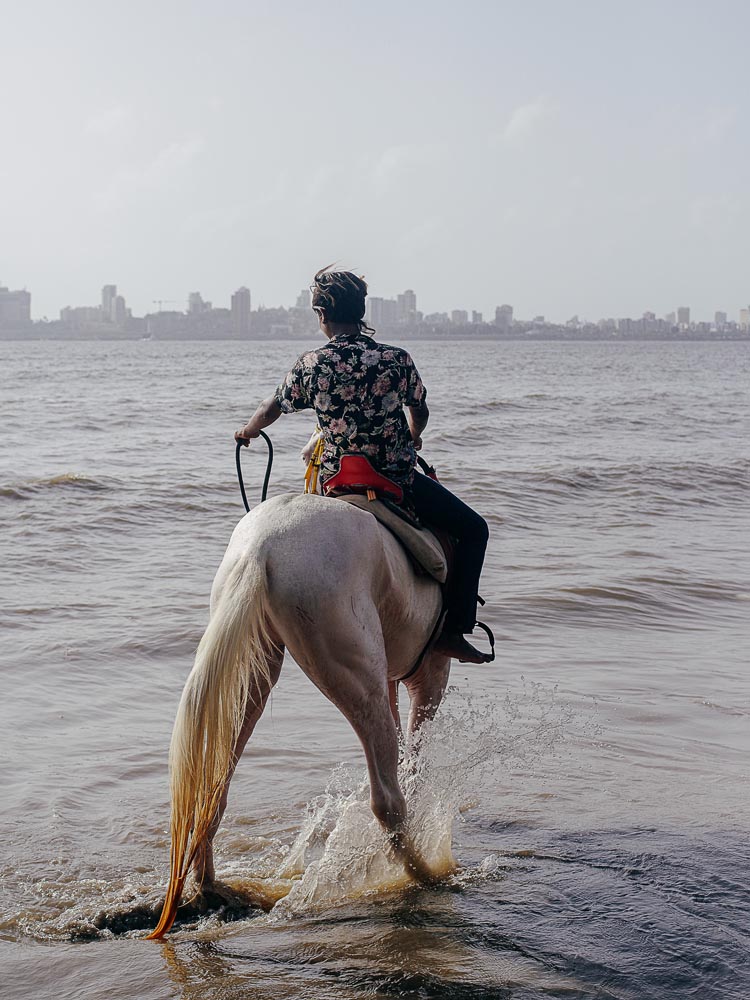
To die is to turn in gold, Pigment Archival Print 2022.
How will Innovate Grant contribute to your practice?
The Innovate Grant is truly a significant milestone for me as an artist. Despite my persistent efforts, I have never received a grant before, making this one even more meaningful to me. While the monetary value of the grant is undoubtedly beneficial, what I appreciate even more is the sense of validation that comes with it. Being an artist can be a solitary endeavor, much like stumbling around in the darkness, which makes receiving this grant feel like a flicker of light on my journey.
With the grant, I intend to produce a couple of photobook dummies for the projects I have been working on. These dummies will serve as an essential tool for me to bring my ideas to life and showcase them to potential collaborators and publishers.
What’s the best piece of advice you’ve been given?
Be prolific.
What is the best advice you would give to other artists?
Be prolific.
Stay up to date with Akshay Mahajan
Instagram @lecercle
Twitter @lecercle
akshaymahajan.in